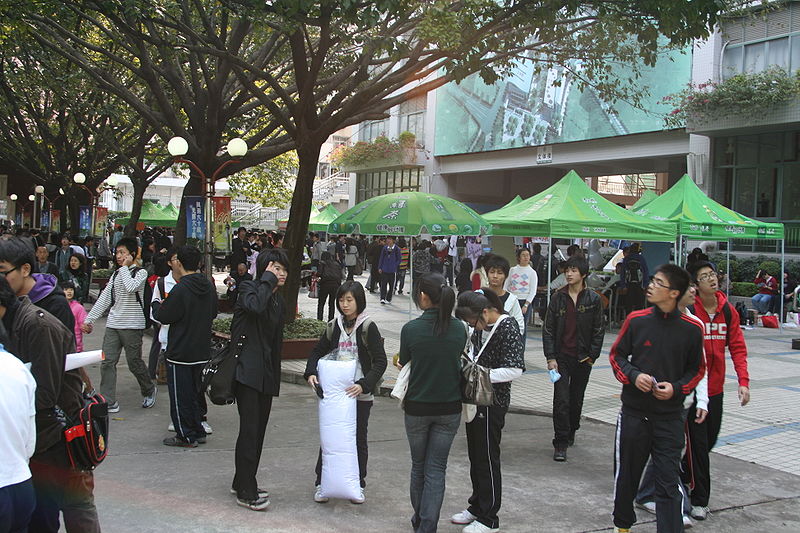Team:Shenzhen SZMS
From 2014hs.igem.org
Contents |
Team
For more information, check the following websites:
- [http://www.shenzhong.net/ school offical website (in Chinese)]
- [http://www.shenzhong.net/news/2013314/n73836977.html school intro (in English)]
- [http://en.wikipedia.org/wiki/Shenzhen_Middle_School Wikipedia]
Project
Our project is to create an E. coli Plant-sitter toolkit whose functions include temperature moderation, fungi inhibition, and hormone provision. We aim to achieve smart manipulation of plant growth introduced through synthetic biology. We hope that our toolkit will simplify the process of plant cultivation and make the technology of synthetic biology accessible to people’s daily life.
Temperature Moderation
It is observed that a considerable number of domestic plant-deaths are caused by negligence of temperature control in overly hot or cold environments. Therefore, we came up with a system which reduces these death-rates and aids the healthy growth of plants by keeping the temperature within a suitable range. Our mechanism of temperature moderation, including a warming system and a cooling system, aims to keep the temperature between 15℃ and 30℃ (the fittest temperature range for most plants) by using RNA thermometers and two controllable chemical reactions, one exothermic and the other endothermic. During the cooling process, the RNA thermometer is activated when the surrounding temperature reaches 30℃, which encodes phytoene dehydrogenase (PDS). The encoded enzyme then dehydrates phytoene to form phytofluene, initiating an endothermic reaction which absorbs energy and cools down the environment. When the temperature drops to around 20℃, a second RNA thermometer is then activated, followed by an inhibitor which ends the translation of PDS and thus the absorption of heat. During the warming process, the RNA thermometer is activated when the surrounding temperature reaches 15℃, which encodes elastase. The encoded enzyme then hydrolyzes protein, initiating an exothermic reaction which releases energy and warms up the environment. When the temperature rises up to around 20℃, a second RNA thermometer is activated, followed by an inhibitor which ends the translation of elastase and thus the release of heat. Through this system of temperature control, we are able to provide an agreeable temperature range which ensures the plants of their healthy development.
Fungi Inhibition
Since our plants and e.coli are exposed to non-sterile condition as in everyday life, they are subjects to contamination by fungi in the air. In order to guarantee the healthy growth of both plants and e.coli, we designed a system which autonomously defends them against fungi contamination by attacking fungi’s cell walls, which primarily consist of chitin. Our aim is to degrade the chitin in the fungi by synthesizing chitinase. With the chitinase coding sequence being inserted in the plasmid, the e.coli will regularly produce chitinase, which attacks the fungi’s cell walls, hinders the normal chitin synthesis, disturbs the life activities of fungi, eliminates fungi contamination, and thus ensures a safe environment for both our plants and our e.coli
Hormone Provision
In order to fulfill our plan of smart cultivation, certain vital plant-growth hormones should be provided to further ensure the optimum development of plants. Auxin, GA, CTK and ethyne are all important hormones in plant-growth, among which we chose auxin for its comprehensive promotion in shoots elongation, root initiation and cell division. Without external sources from which hormones can be derived, it is difficult for a single plant by itself to synthesize sufficient hormones to guarantee its optimal development. Therefore, we employ e.coli as the source of auxin by inserting auxin’s coding sequence into the plasmid. In this way, we are able to construct a convenient auxin supply which serves as a supportive aid to the plants’ development.
Notebook
Show us how you spent your days.
Results/Conclusions
What did you achieve over the course of your semester?
Safety
What safety precautions did your team take? Did you take a safety training course? Were you supervised at all times in the lab?
Attributions
Who worked on what?
Human Practices
What impact does/will your project have on the public?
Fun!
What was your favorite team snack?? Have a picture of your team mascot?
<forum_subtle />
 "
"

